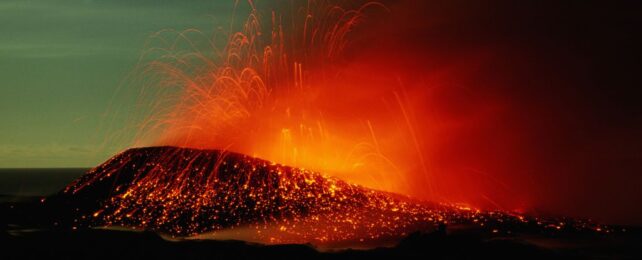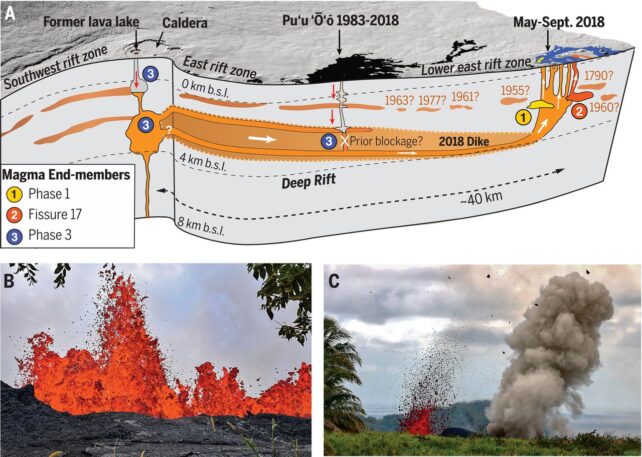ARTICLE AD
 Kīlauea eruption. (Paul Souders/Getty Images)
Kīlauea eruption. (Paul Souders/Getty Images)
The famous eruption that shot fountains of lava high into the sky on the island of Hawaiʻi in 2018 is teaching scientists what volcanoes are capable of.
The unique series of 12 outbursts, which destroyed at least 700 homes and displaced more than 2,000 people, could represent a whole new explosive volcanic mechanism.
"A cool thing about these eruptions is that there were a bunch of them in sequence that were remarkably similar; that's relatively unusual," explains volcanologist Leif Karlstrom from the University of Oregon.
"Typically, volcanic eruptions don't happen with as much regularity."
Most known volcanic eruptions are thought to have started from the pressure of rising magma, steaming groundwater, or a combination of both underground forces. But the Kīlauea volcano's outburst six years ago is not tied to either.
In fact, nothing seems to have dramatically changed in the temperature or chemistry of the world's most active volcano before it suddenly blew its guts out.
Baffled by the data, two volcanologists in 2019 suggested that the eruptions along Kīlauea's east rift zone, fed by an underground river of lava, could have been triggered by a "stomp rocket" mechanism.
A stomp rocket is a toy designed so that when a person steps onto a bladder of air, it pushes the air into a tube and forces an attached 'rocket' into flight.
In the case of Kīlauea, US Geological Survey (USGS) volcanologists David Shelly and Weston Thelen suggested that the foot doing the 'stomping' was the ground above a lava chamber collapsing, causing gases, rock, and lava to rocket out of the deep into the world above.
 Kīlauea volcano during the eruption of 2018. (Gansecki et al., Science, 2018/Photos by USGS)
Kīlauea volcano during the eruption of 2018. (Gansecki et al., Science, 2018/Photos by USGS)Now a team of researchers including Karlstrom, Thelen, and their colleagues at the University of Oregon, USGS, and China's Sichuan University have confirmed that the 'foot stomping' mechanism is indeed a possibility.
In 2018, flows of magma drained out of Kīlauea's main system and spread eastward, forming a 10-kilometer-long (6.2-mile) underground tunnel. At the same time, a series of earthquakes hit the region.
Models suggest that if the roof of the lava tunnel suddenly collapsed from one of these earthquakes, it could cause a splash, building pressure underground that could easily result in an atmospheric plume shooting 8 kilometers (5 miles) high out of a vent, as was observed in 2018.
"The Kīlauea explosions occurred while the volcano's summit was in the beginning phases of caldera collapse, when enough magma had drained from the reservoir to cause the overlying crustal rock to drop downward under its own weight," the team explains.
"The Kīlauea collapse occurred via a series of discrete earthquakes, where rock over the reservoir abruptly slipped downward and decreased the volume of the reservoir."
The timing of the first nine eruptions in 2018 can all be explained by this 'stomp' effect, suggesting it was the dominant dynamic at play.
While this is the first volcanic eruption to prompt scientists to consider this novel trigger, the collapse of a volcano's crater is a feature of several other past eruptions, which suggests the mechanism could be more common than scientists thought.
A better understanding of how volcanoes erupt is crucial if we are to predict and prepare for future outbursts. Kīlauea's 2018 eruption is a useful opportunity to learn from disasters gone by.
The study was published in Nature Geoscience.

 5 months ago
36
5 months ago
36 

